History of England: From the Romans to Normans

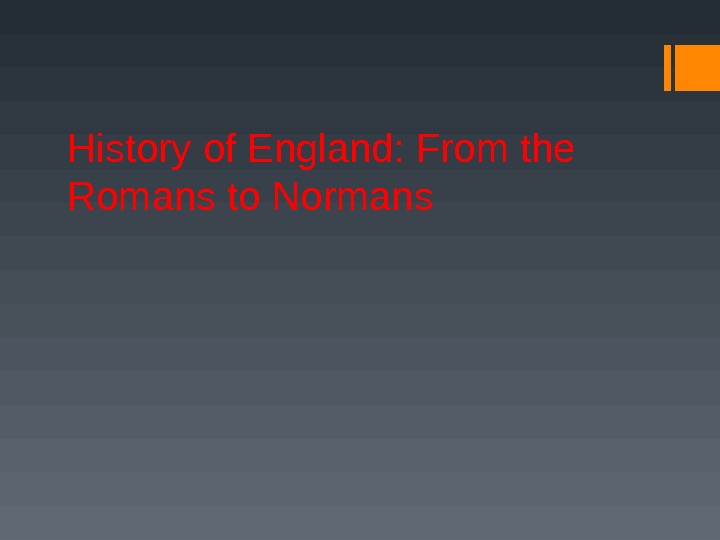
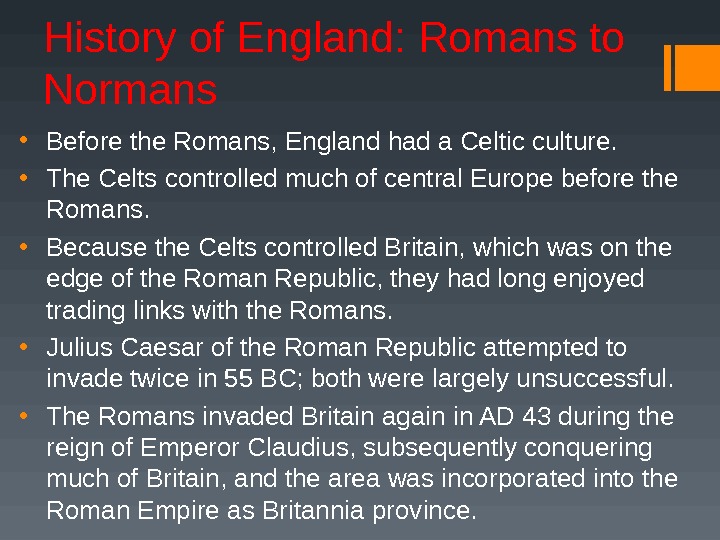
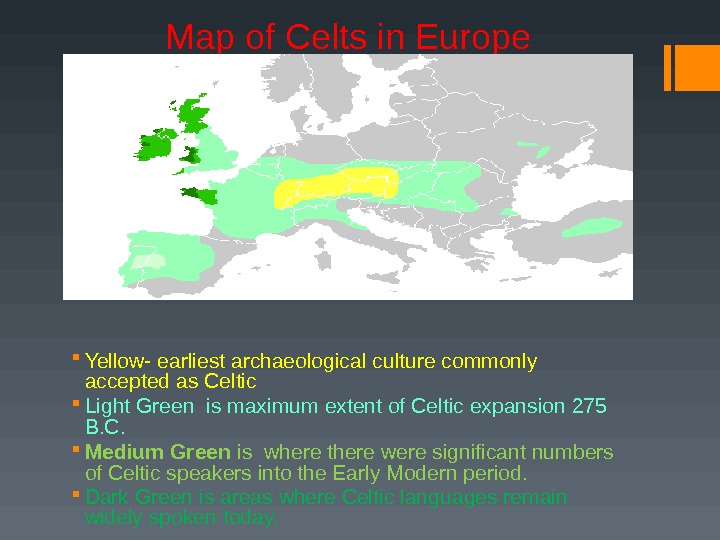


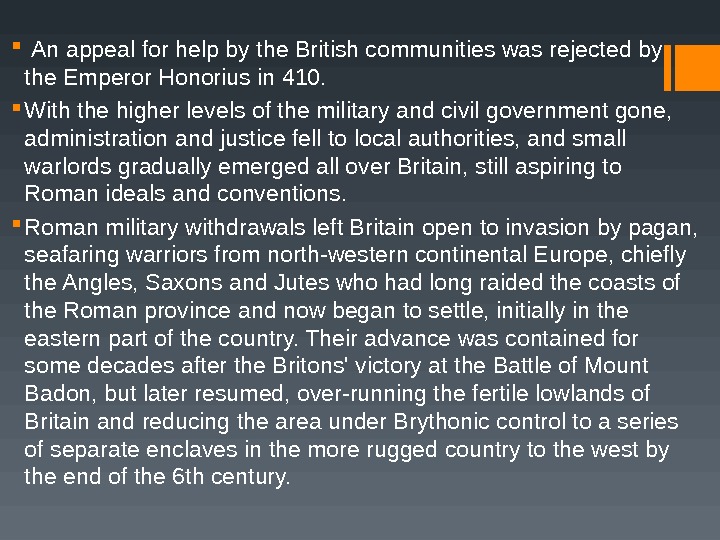
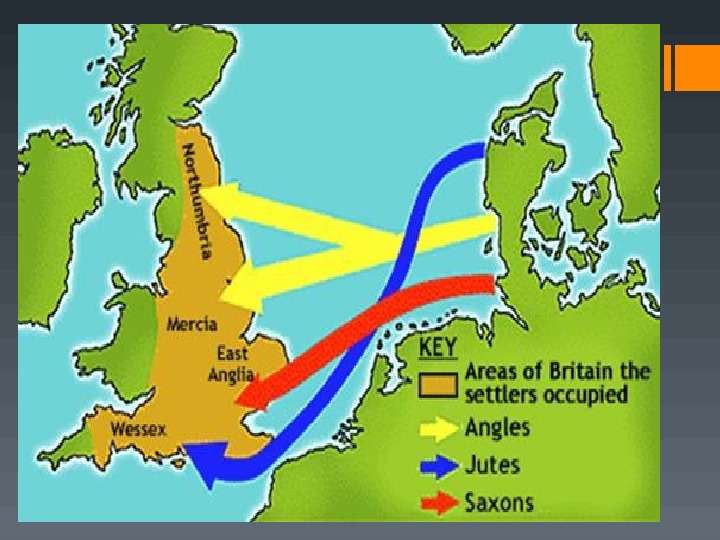
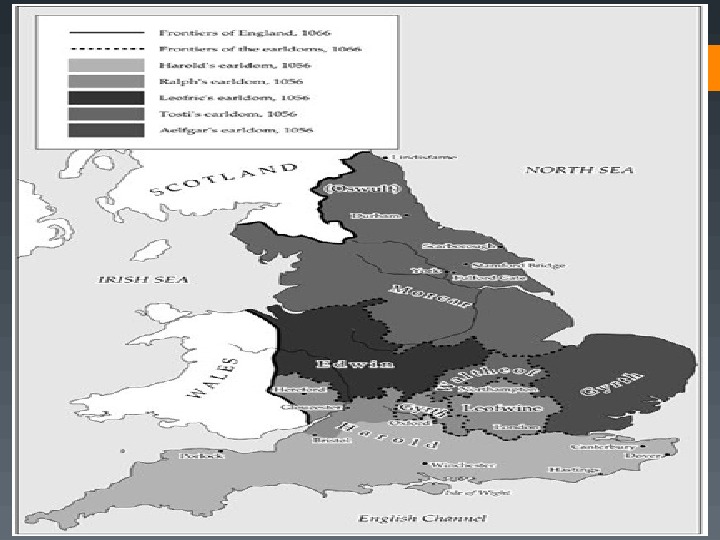

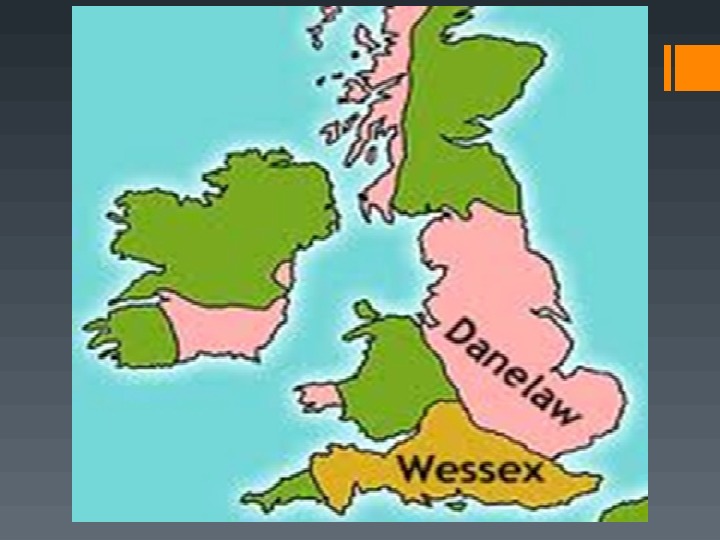
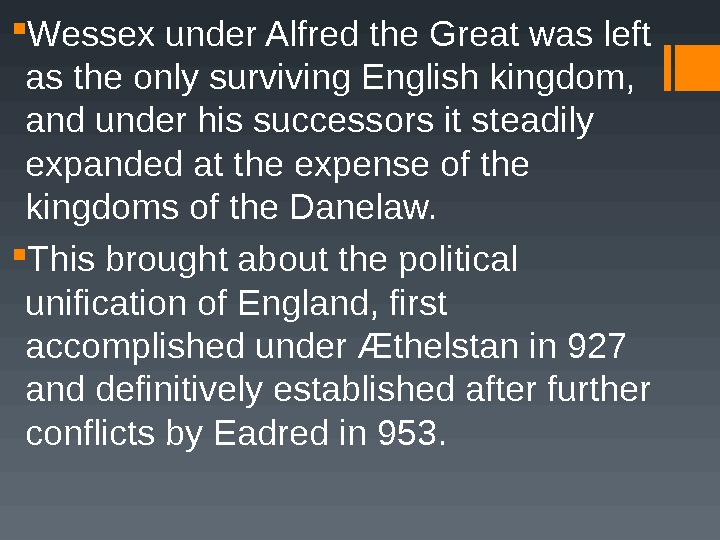

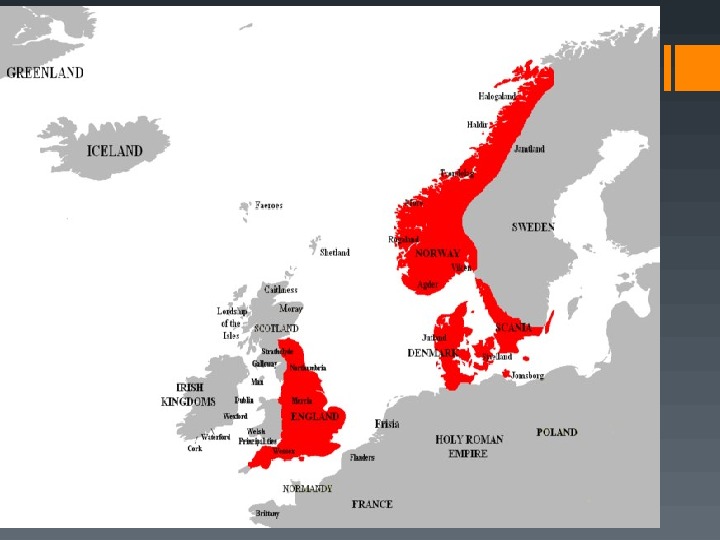
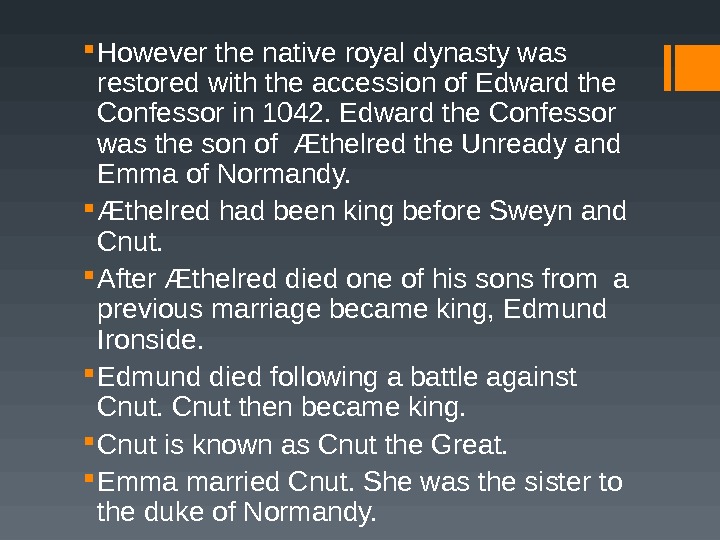
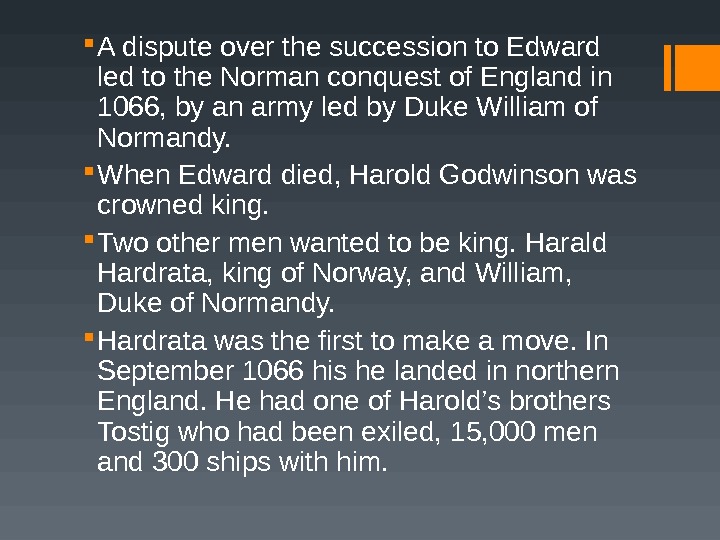
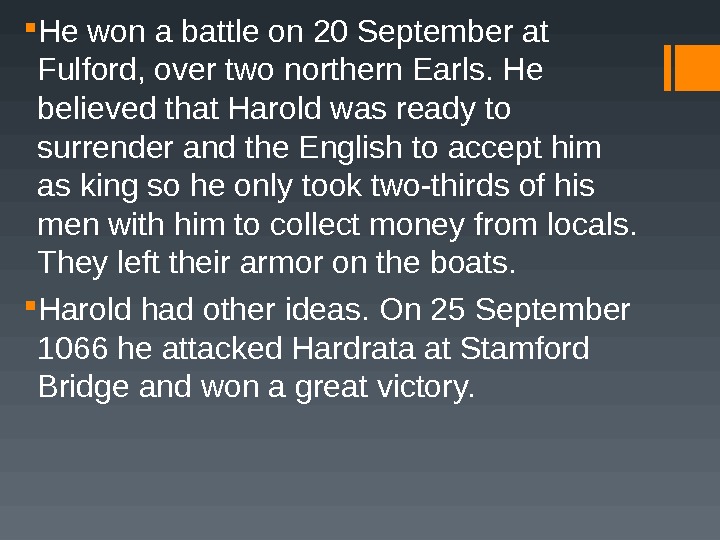
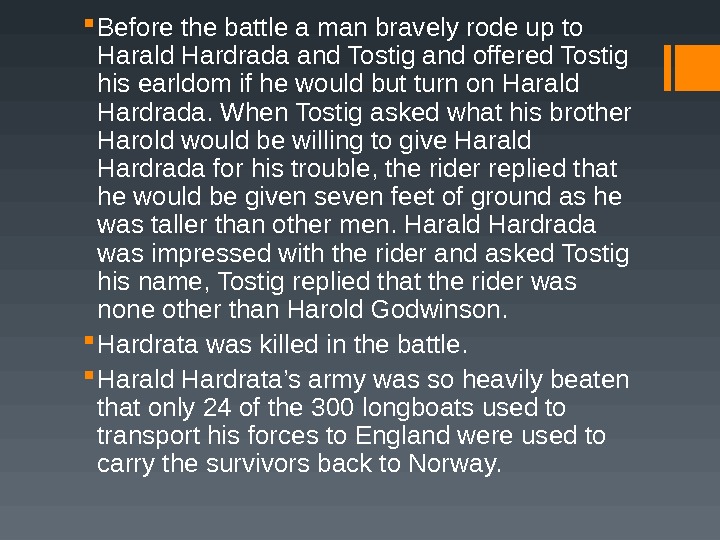
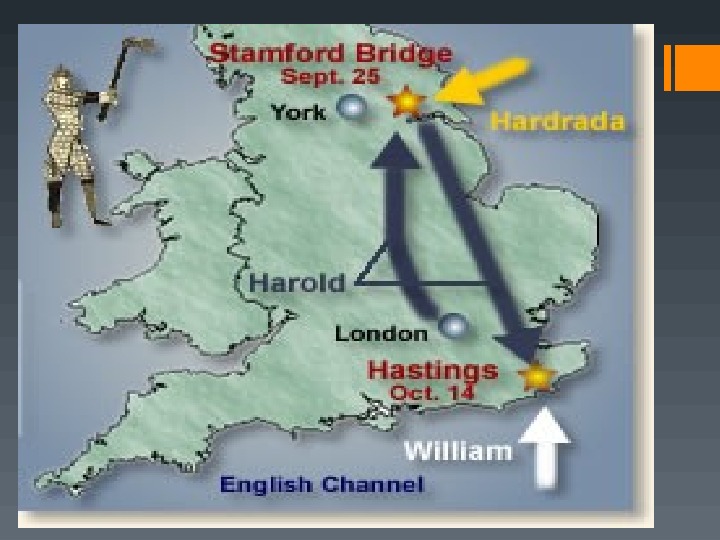
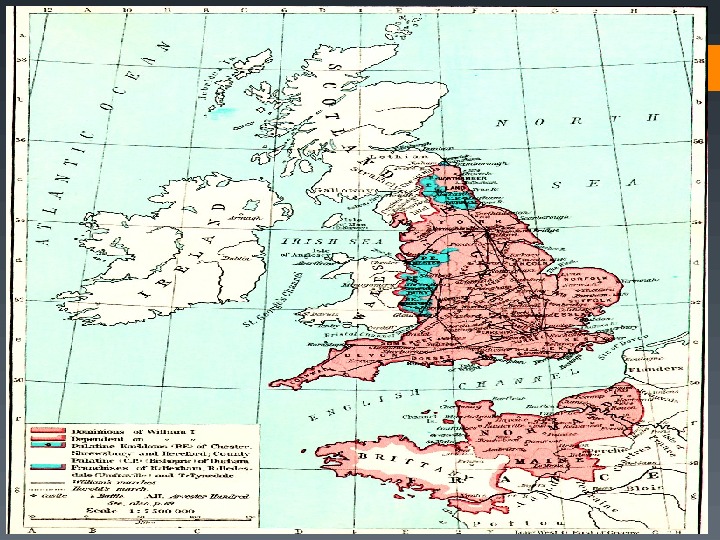
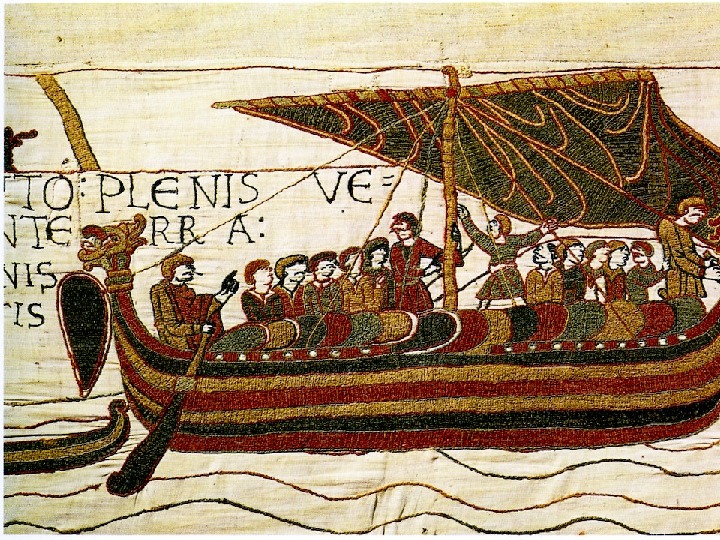
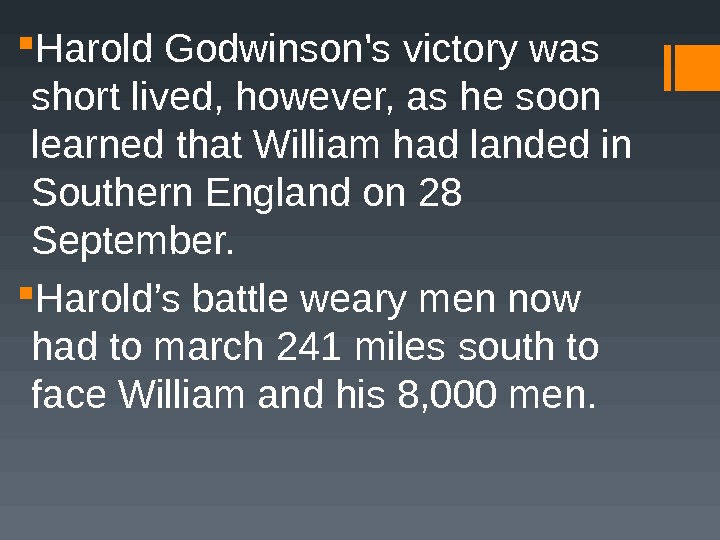
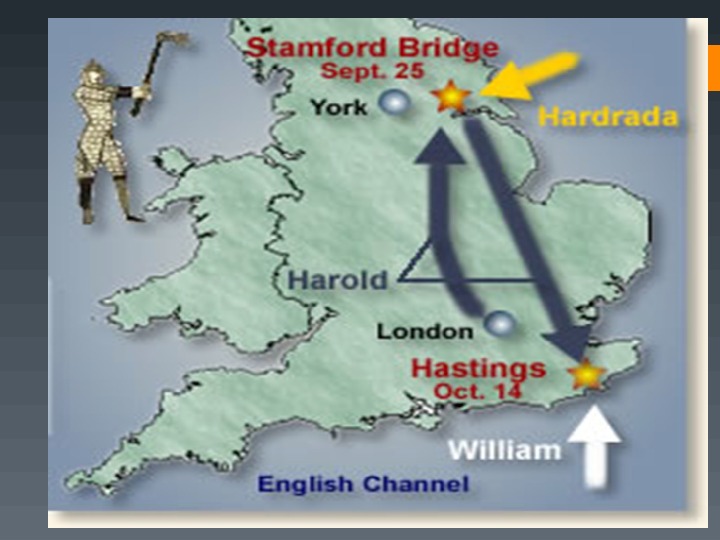

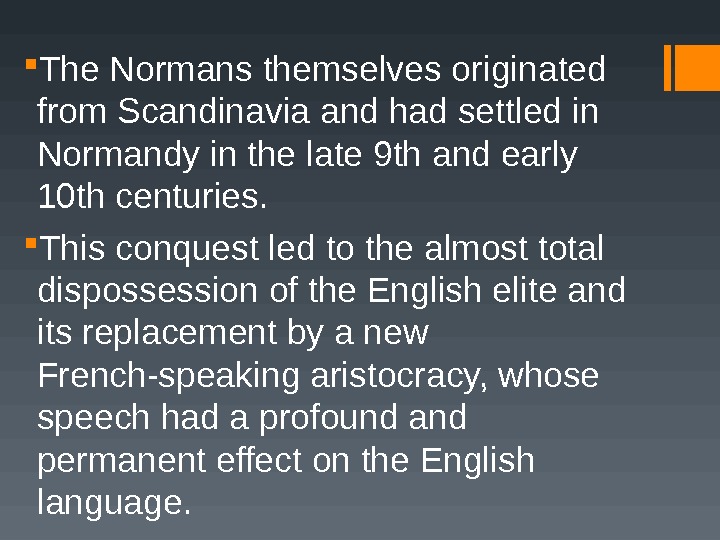
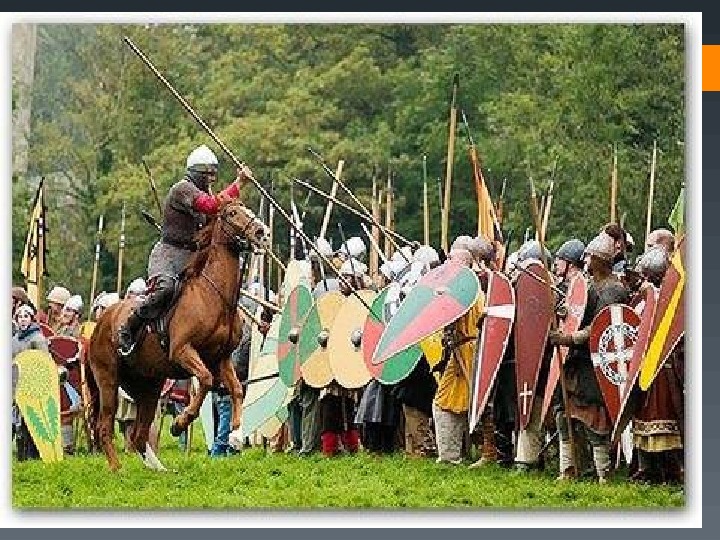
history_of_england_from_the_romans_to_normans.ppt
- Размер: 7.8 Mегабайта
- Количество слайдов: 25
Описание презентации History of England: From the Romans to Normans по слайдам
 History of England: From the Romans to Normans
History of England: From the Romans to Normans
 History of England: Romans to Normans • Before the Romans, England had a Celtic culture. • The Celts controlled much of central Europe before the Romans. • Because the Celts controlled Britain, which was on the edge of the Roman Republic, they had long enjoyed trading links with the Romans. • Julius Caesar of the Roman Republic attempted to invade twice in 55 BC; both were largely unsuccessful. • The Romans invaded Britain again in AD 43 during the reign of Emperor Claudius, subsequently conquering much of Britain, and the area was incorporated into the Roman Empire as Britannia province.
History of England: Romans to Normans • Before the Romans, England had a Celtic culture. • The Celts controlled much of central Europe before the Romans. • Because the Celts controlled Britain, which was on the edge of the Roman Republic, they had long enjoyed trading links with the Romans. • Julius Caesar of the Roman Republic attempted to invade twice in 55 BC; both were largely unsuccessful. • The Romans invaded Britain again in AD 43 during the reign of Emperor Claudius, subsequently conquering much of Britain, and the area was incorporated into the Roman Empire as Britannia province.
 Map of Celts in Europe Yellow- earliest archaeological culture commonly accepted as Celtic Light Green is maximum extent of Celtic expansion 275 B. C. Medium Green is where there were significant numbers of Celtic speakers into the Early Modern period. Dark Green is areas where Celtic languages remain widely spoken today.
Map of Celts in Europe Yellow- earliest archaeological culture commonly accepted as Celtic Light Green is maximum extent of Celtic expansion 275 B. C. Medium Green is where there were significant numbers of Celtic speakers into the Early Modern period. Dark Green is areas where Celtic languages remain widely spoken today.
 Following the conquest of the native Britons, a distinctive Romano-British culture emerged. The Romans largely departed from Britain around 410, leading to what is known as the sub-Roman period, but the legacy of the empire was felt for hundreds of years. Britain had come under increasing pressure from barbarian attacks on all sides towards the end of the 4 th century, and troops were too few to mount an effective defense. The army rebelled and, after elevating two disappointing usurpers, chose a soldier, Constantine III, to become emperor in 407. He soon crossed to Gaul with an army and was defeated by Honorius; it is unclear how many troops remained or ever returned, or whether a commander-in-chief in Britain was ever reappointed.
Following the conquest of the native Britons, a distinctive Romano-British culture emerged. The Romans largely departed from Britain around 410, leading to what is known as the sub-Roman period, but the legacy of the empire was felt for hundreds of years. Britain had come under increasing pressure from barbarian attacks on all sides towards the end of the 4 th century, and troops were too few to mount an effective defense. The army rebelled and, after elevating two disappointing usurpers, chose a soldier, Constantine III, to become emperor in 407. He soon crossed to Gaul with an army and was defeated by Honorius; it is unclear how many troops remained or ever returned, or whether a commander-in-chief in Britain was ever reappointed.

 An appeal for help by the British communities was rejected by the Emperor Honorius in 410. With the higher levels of the military and civil government gone, administration and justice fell to local authorities, and small warlords gradually emerged all over Britain, still aspiring to Roman ideals and conventions. Roman military withdrawals left Britain open to invasion by pagan, seafaring warriors from north-western continental Europe, chiefly the Angles, Saxons and Jutes who had long raided the coasts of the Roman province and now began to settle, initially in the eastern part of the country. Their advance was contained for some decades after the Britons’ victory at the Battle of Mount Badon, but later resumed, over-running the fertile lowlands of Britain and reducing the area under Brythonic control to a series of separate enclaves in the more rugged country to the west by the end of the 6 th century.
An appeal for help by the British communities was rejected by the Emperor Honorius in 410. With the higher levels of the military and civil government gone, administration and justice fell to local authorities, and small warlords gradually emerged all over Britain, still aspiring to Roman ideals and conventions. Roman military withdrawals left Britain open to invasion by pagan, seafaring warriors from north-western continental Europe, chiefly the Angles, Saxons and Jutes who had long raided the coasts of the Roman province and now began to settle, initially in the eastern part of the country. Their advance was contained for some decades after the Britons’ victory at the Battle of Mount Badon, but later resumed, over-running the fertile lowlands of Britain and reducing the area under Brythonic control to a series of separate enclaves in the more rugged country to the west by the end of the 6 th century.


 During the settlement period the lands ruled by the incomers seem to have been fragmented into numerous tribal territories, but by the 7 th century these had combined into roughly a dozen kingdoms including Northumbria, Mercia, Wessex, East Anglia, Essex, Kent and Sussex. Over the following centuries this process of political consolidation continued. The 7 th century saw a struggle for supremacy between Northumbria and Mercia, which in the 8 th century gave way to Mercian domination. In the early 9 th century Mercia was displaced as the foremost kingdom by Wessex. Later in that century escalating attacks by the Danes culminated in the conquest of the north and east of England, overthrowing the kingdoms of Northumbria, Mercia and East Anglia. The territories in England ruled by the Danes were known as the Danelaw.
During the settlement period the lands ruled by the incomers seem to have been fragmented into numerous tribal territories, but by the 7 th century these had combined into roughly a dozen kingdoms including Northumbria, Mercia, Wessex, East Anglia, Essex, Kent and Sussex. Over the following centuries this process of political consolidation continued. The 7 th century saw a struggle for supremacy between Northumbria and Mercia, which in the 8 th century gave way to Mercian domination. In the early 9 th century Mercia was displaced as the foremost kingdom by Wessex. Later in that century escalating attacks by the Danes culminated in the conquest of the north and east of England, overthrowing the kingdoms of Northumbria, Mercia and East Anglia. The territories in England ruled by the Danes were known as the Danelaw.

 Wessex under Alfred the Great was left as the only surviving English kingdom, and under his successors it steadily expanded at the expense of the kingdoms of the Danelaw. This brought about the political unification of England, first accomplished under Æthelstan in 927 and definitively established after further conflicts by Eadred in 953.
Wessex under Alfred the Great was left as the only surviving English kingdom, and under his successors it steadily expanded at the expense of the kingdoms of the Danelaw. This brought about the political unification of England, first accomplished under Æthelstan in 927 and definitively established after further conflicts by Eadred in 953.
 A fresh wave of Scandinavian attacks from the late 10 th century ended with the conquest of this united kingdom by Sweyn Forkbeard in 1013 and again by his son Cnut in 1016, turning it into the center of a short-lived North Sea empire that also included Denmark and Norway.
A fresh wave of Scandinavian attacks from the late 10 th century ended with the conquest of this united kingdom by Sweyn Forkbeard in 1013 and again by his son Cnut in 1016, turning it into the center of a short-lived North Sea empire that also included Denmark and Norway.

 However the native royal dynasty was restored with the accession of Edward the Confessor in 1042. Edward the Confessor was the son of Æthelred the Unready and Emma of Normandy. Æthelred had been king before Sweyn and Cnut. After Æthelred died one of his sons from a previous marriage became king, Edmund Ironside. Edmund died following a battle against Cnut then became king. Cnut is known as Cnut the Great. Emma married Cnut. She was the sister to the duke of Normandy.
However the native royal dynasty was restored with the accession of Edward the Confessor in 1042. Edward the Confessor was the son of Æthelred the Unready and Emma of Normandy. Æthelred had been king before Sweyn and Cnut. After Æthelred died one of his sons from a previous marriage became king, Edmund Ironside. Edmund died following a battle against Cnut then became king. Cnut is known as Cnut the Great. Emma married Cnut. She was the sister to the duke of Normandy.
 A dispute over the succession to Edward led to the Norman conquest of England in 1066, by an army led by Duke William of Normandy. When Edward died, Harold Godwinson was crowned king. Two other men wanted to be king. Harald Hardrata, king of Norway, and William, Duke of Normandy. Hardrata was the first to make a move. In September 1066 his he landed in northern England. He had one of Harold’s brothers Tostig who had been exiled, 15, 000 men and 300 ships with him.
A dispute over the succession to Edward led to the Norman conquest of England in 1066, by an army led by Duke William of Normandy. When Edward died, Harold Godwinson was crowned king. Two other men wanted to be king. Harald Hardrata, king of Norway, and William, Duke of Normandy. Hardrata was the first to make a move. In September 1066 his he landed in northern England. He had one of Harold’s brothers Tostig who had been exiled, 15, 000 men and 300 ships with him.
 He won a battle on 20 September at Fulford, over two northern Earls. He believed that Harold was ready to surrender and the English to accept him as king so he only took two-thirds of his men with him to collect money from locals. They left their armor on the boats. Harold had other ideas. On 25 September 1066 he attacked Hardrata at Stamford Bridge and won a great victory.
He won a battle on 20 September at Fulford, over two northern Earls. He believed that Harold was ready to surrender and the English to accept him as king so he only took two-thirds of his men with him to collect money from locals. They left their armor on the boats. Harold had other ideas. On 25 September 1066 he attacked Hardrata at Stamford Bridge and won a great victory.
 Before the battle a man bravely rode up to Harald Hardrada and Tostig and offered Tostig his earldom if he would but turn on Harald Hardrada. When Tostig asked what his brother Harold would be willing to give Harald Hardrada for his trouble, the rider replied that he would be given seven feet of ground as he was taller than other men. Harald Hardrada was impressed with the rider and asked Tostig his name, Tostig replied that the rider was none other than Harold Godwinson. Hardrata was killed in the battle. Harald Hardrata’s army was so heavily beaten that only 24 of the 300 longboats used to transport his forces to England were used to carry the survivors back to Norway.
Before the battle a man bravely rode up to Harald Hardrada and Tostig and offered Tostig his earldom if he would but turn on Harald Hardrada. When Tostig asked what his brother Harold would be willing to give Harald Hardrada for his trouble, the rider replied that he would be given seven feet of ground as he was taller than other men. Harald Hardrada was impressed with the rider and asked Tostig his name, Tostig replied that the rider was none other than Harold Godwinson. Hardrata was killed in the battle. Harald Hardrata’s army was so heavily beaten that only 24 of the 300 longboats used to transport his forces to England were used to carry the survivors back to Norway.



 Harold Godwinson’s victory was short lived, however, as he soon learned that William had landed in Southern England on 28 September. Harold’s battle weary men now had to march 241 miles south to face William and his 8, 000 men.
Harold Godwinson’s victory was short lived, however, as he soon learned that William had landed in Southern England on 28 September. Harold’s battle weary men now had to march 241 miles south to face William and his 8, 000 men.

 The two armies meet at a place now known simply as Battle. The battle of Hastings as it would be known lasted from 9 a. m. to 3 p. m. When it was over William had won and Harold was dead. With Williams victory at Hastings, the Normans became the rulers of England.
The two armies meet at a place now known simply as Battle. The battle of Hastings as it would be known lasted from 9 a. m. to 3 p. m. When it was over William had won and Harold was dead. With Williams victory at Hastings, the Normans became the rulers of England.
 The Normans themselves originated from Scandinavia and had settled in Normandy in the late 9 th and early 10 th centuries. This conquest led to the almost total dispossession of the English elite and its replacement by a new French-speaking aristocracy, whose speech had a profound and permanent effect on the English language.
The Normans themselves originated from Scandinavia and had settled in Normandy in the late 9 th and early 10 th centuries. This conquest led to the almost total dispossession of the English elite and its replacement by a new French-speaking aristocracy, whose speech had a profound and permanent effect on the English language.


